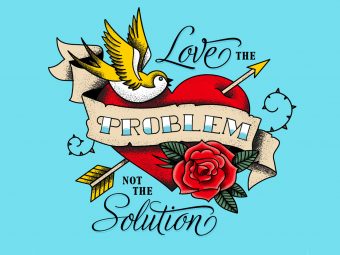Consistency is crucial to the health and success of any brand. But maintaining a consistent brand presence can be a major challenge, especially when you’re working with a large team or collaborating with partners outside of your organization.
Without an internal reference point for your brand, discrepancies and confusion become inevitable, and that can seriously affect how your customers see you*. On top of that, if you constantly have to clarify what’s “on-brand,” you’re really wasting a lot of time and not arming your team with the tools they need to do their best work.
*Life Pro Tip: There’s nothing wrong with trying new things, but don’t be that guy trying to bring back frosted tips in 2017. It’s not gonna happen.
At CNP, one of the most valuable assets our team routinely uses is a brand guide (sometimes called “brand standards,” a “ brand book” or a “style guide”). Simply put, a brand guide is a type of manual that outlines best practices for implementing your organization’s visual and verbal identity. Brand guides typically cover basic info like logo usage, typography and color palette specifications, but can be easily scaled to cover virtually any element of your brand, including photography style, tone of voice, merchandising applications and more.
For creatives, a brand guide is basically like our Bible and Wikipedia rolled into one: a comprehensive compendium of knowledge that provides boundaries for our work so we can build uniform brands that resonate clearly, over and over again. Although building a brand guide takes additional time and effort, it’s extremely rewarding and can give you a leading edge over competitors who haven’t made the investment. It also leads to a lot less design debt that will eventually need to be repaid.
Let’s take a closer look inside a brand guide to see how its components help businesses construct powerful visual identities and maximum-impact messaging.
Brand Platform: the Key to Your Corporate Image
The first thing that comes to mind when thinking about your brand might be the accompanying visuals, but the foundation for your brand should always be based on a solid verbal platform: your mission, your goals, your attitudes, the way you speak, etc.

Voice and tone guidelines make it easy to develop communications that are well-aligned with the values and personality your brand.
Identifying your business’s unique qualities and characteristics helps set the tone for your communications across all touch points. Just like in real life, a radical shift in tone or personality can come across as confusing at best, inauthentic at worst. Either way, there’s a good chance it will turn people off.

A well-defined brand platform not only gives your organization a deeper understanding of itself, it ensures that the true character of your organization shines through with every interaction. It’s also a great source for inspiration and direction when you’re challenged with new projects and marketing activities that go beyond what’s been done before.
Brand Visuals: Success by Design
While it is important not to be too superficial with your brand, the importance of consistent, purposefully designed visuals can make you feel that same swagger you get when you walk back into the office after a dope-ass haircut (hollaaaaa).

Aktana’s brand guide illustrates some of the nuance of their brand visuals. Both color and typography are fully documented to allow brand visuals to remain consistent and flexible.
This section of your brand guide is going to be referenced quite a bit, so it’s really important to know the parameters you’ll be setting for your team. Think about how your brand is going to be implemented and what type of common visual applications you’ll need to describe. For some brands it’ll be limited to logo, colors, typography and photography, but for others it can extend to packaging, paper, signage and vehicle graphics.
Brand Visual Basics:
• Logo usage
• Typography
• Color Palette
• Photography
• Iconography
• Graphic treatments
I’d also highly recommend exploring the “why” behind your brand visuals. If you have a good reason for picking Helvetica Neue as your primary font, explain it! The methodology behind each design choice and how it connects to your brand is excellent fuel for future creative brainstorming.
*Pro tip:* Remember that your brand needs flexibility. Being unnecessarily rigid can stifle creativity and exploration. Your brand is an ecosystem that should continually evolve.
Digital Considerations
An important consideration to make is to tailor details specifically to your online presence. Identify styles for user interface, iconography, and animation and unify them with printed brand collateral. Take note of functionality and understand that not everything that is done in print can be replicated effectively on digital platforms. And don’t forget—your brand needs to look sharp in all screen sizes.
Print Considerations
Going beyond the look of your brand and turning your attention to the physical experience of your design can really make an impression. You should reinforce ideas uncovered in your brand platform and visual design. For example, if your brand has a serious, sophisticated and businesslike personality, using an uncoated, textured paper for printed items could reinforce that perception with your target audience. If your brand uses printed items frequently, it might be good to identify the appropriate ways to print documents as well as the vendors you prefer to work with.
Execution: Your Brand Lookbook
What good is a bespoke brand if it never makes it out of the perfectly curated closet? Creating a lookbook that can inform and inspire your staff will serve you well and help underscore the high bar you’ve set.

In the brand guide for Visit Central Florida’s Choose Everything Campaign some of the execution examples included banner ups that demonstrate how the color palette should be treated in different use cases.
While this resource won’t be robust at first, it will quickly grow along with your brand. Use this section as a showcase for your best work, and consider updating your brand guide periodically with work samples that show how your brand lives IRL. Keep in mind that you should highlight real-world applications, not idealized mockups.
One Helpful Handbook, One Helluva Brand
The trick to maintaining a cohesive brand lies in understanding the underlying elements of your brand’s verbal and visual identity, and how to properly apply them. Bringing those standards together in the form of a brand guide equips your team with a flexible document they can continually consult for direction, insight and inspiration. It’s an important first move in the larger game of marketing strategy. And the sooner you nail down your ground rules, the sooner your brand can really get to work.




